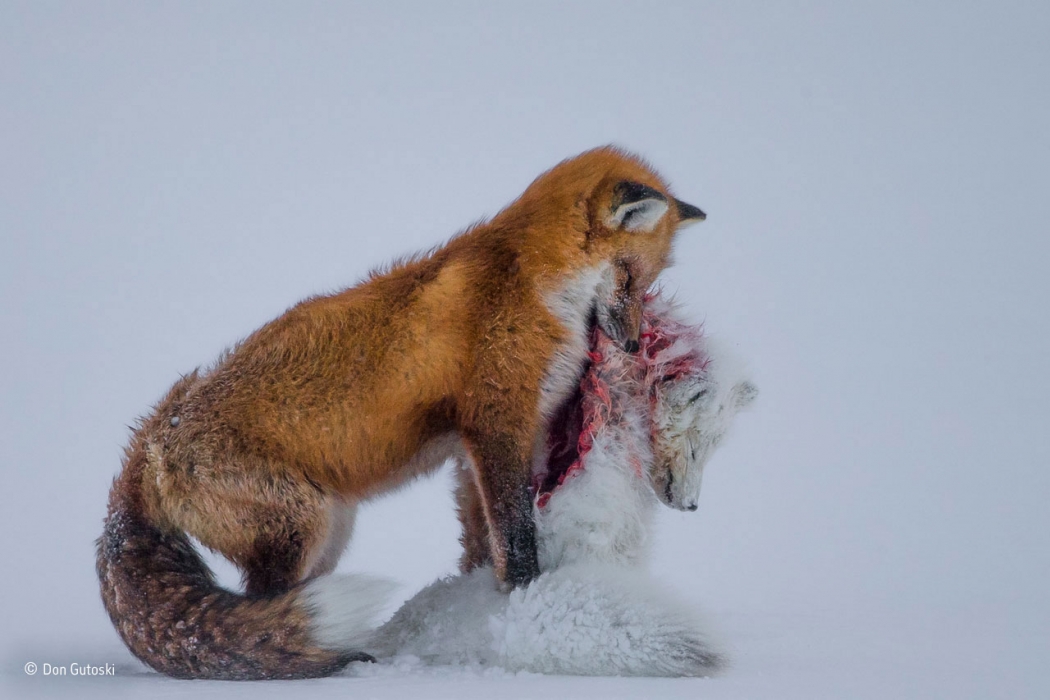The following Climate Central article was written by Brian Kahn and posted October 14th with the title above:
This year’s Wildlife Photographer of the Year contest winners were officially announced on Wednesday. All the images are stunning displays of the natural world, but this year’s winner also has a climate change tale to tell.
The image, titled “A Tale of Two Foxes,” was taken by amateur photographer Dan Gutoski on the tundra of Wapusk National Park located in the far northeast corner of Manitoba. It shows a red fox with the carcass of an Arctic fox it had killed. To capture the photo, Gutoski spent three hours in -22°F weather waiting for the red fox to finally carry the carcass to another location for storage.
The stunning image also shows one of the impacts of climate change. Red foxes are invading the range of Arctic foxes as the temperature warms, putting the two foxes in direct competition for resources. Red foxes are larger and can outcompete Arctic foxes for limited resources. Declining snowpack also makes the Arctic fox’s white coat less of an asset when hunting, particularly in fall and spring, while changing plant cover on the tundra is furthering altering prime Arctic fox habitat.
According to London’s Natural History Museum — which developed and produced the contest — there have been few actual documented cases of red foxes preying on Arctic foxes, but rising temperatures and shifting habitats mean it’s likely that conflicts between the two mammals will become more common.
This year, organizers received 42,000 entries from professsional and amateur photographers alike. While Gutoski’s photograph won photo of the year, the other category winners are equally deserving of your attention.


